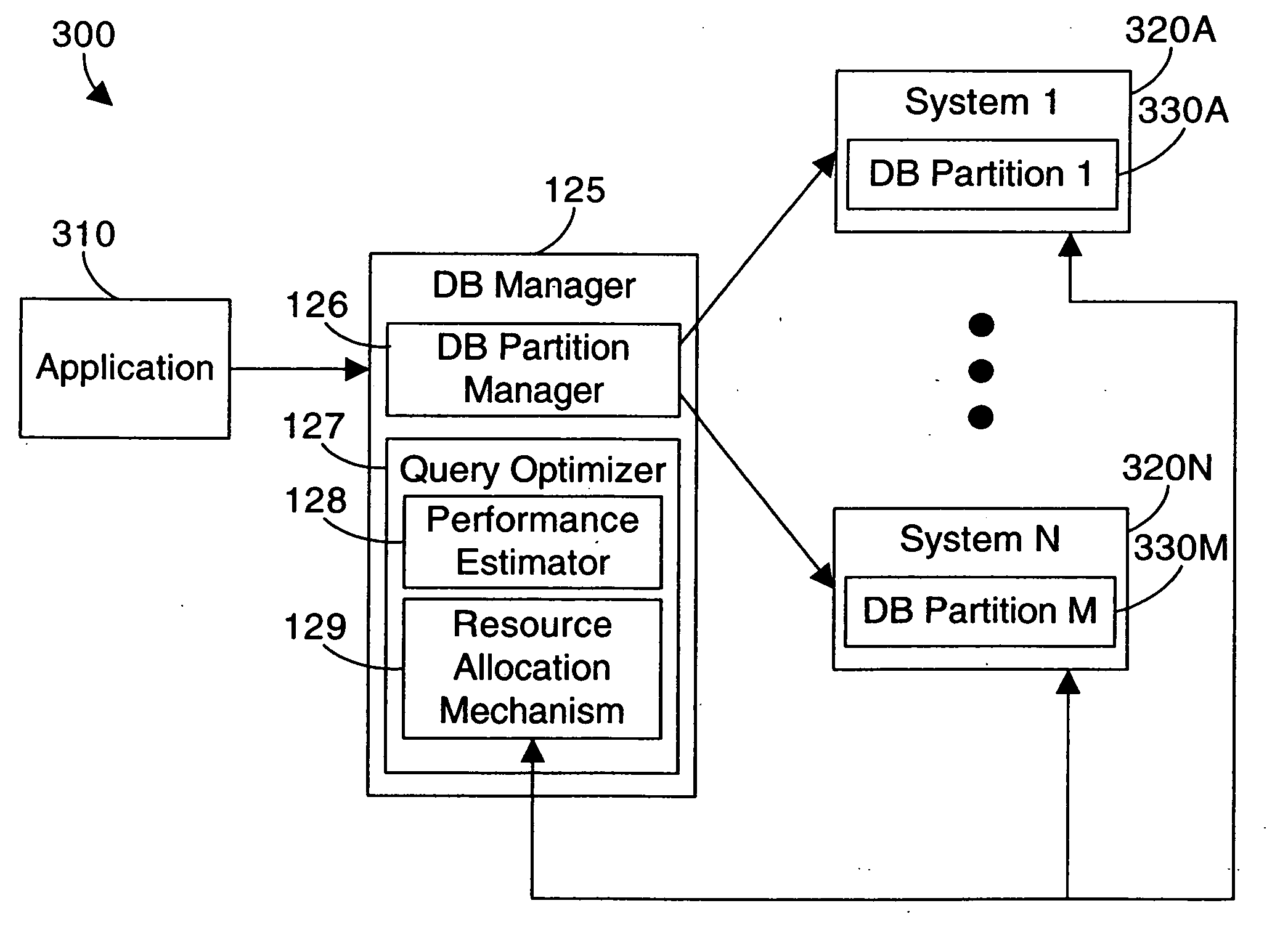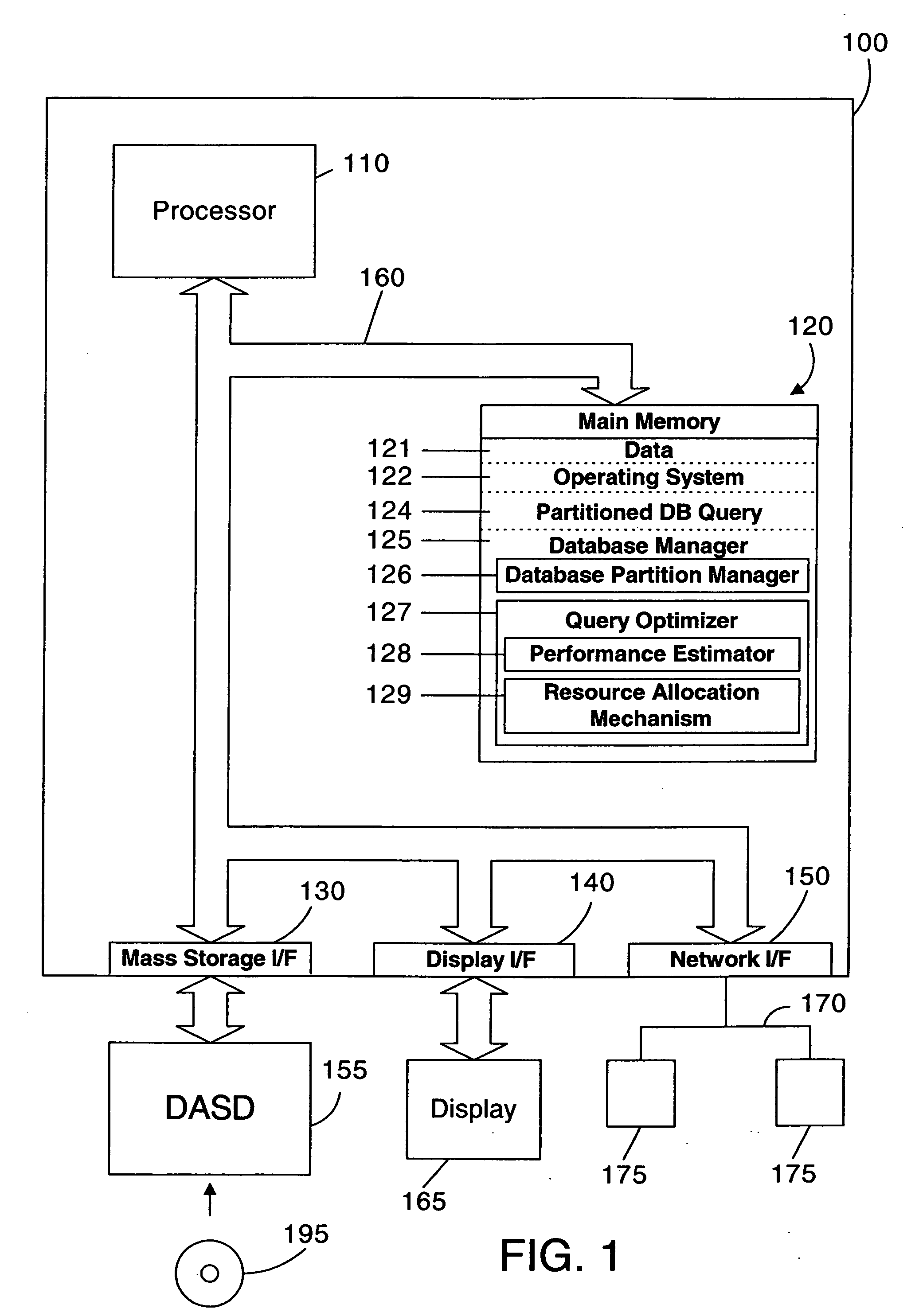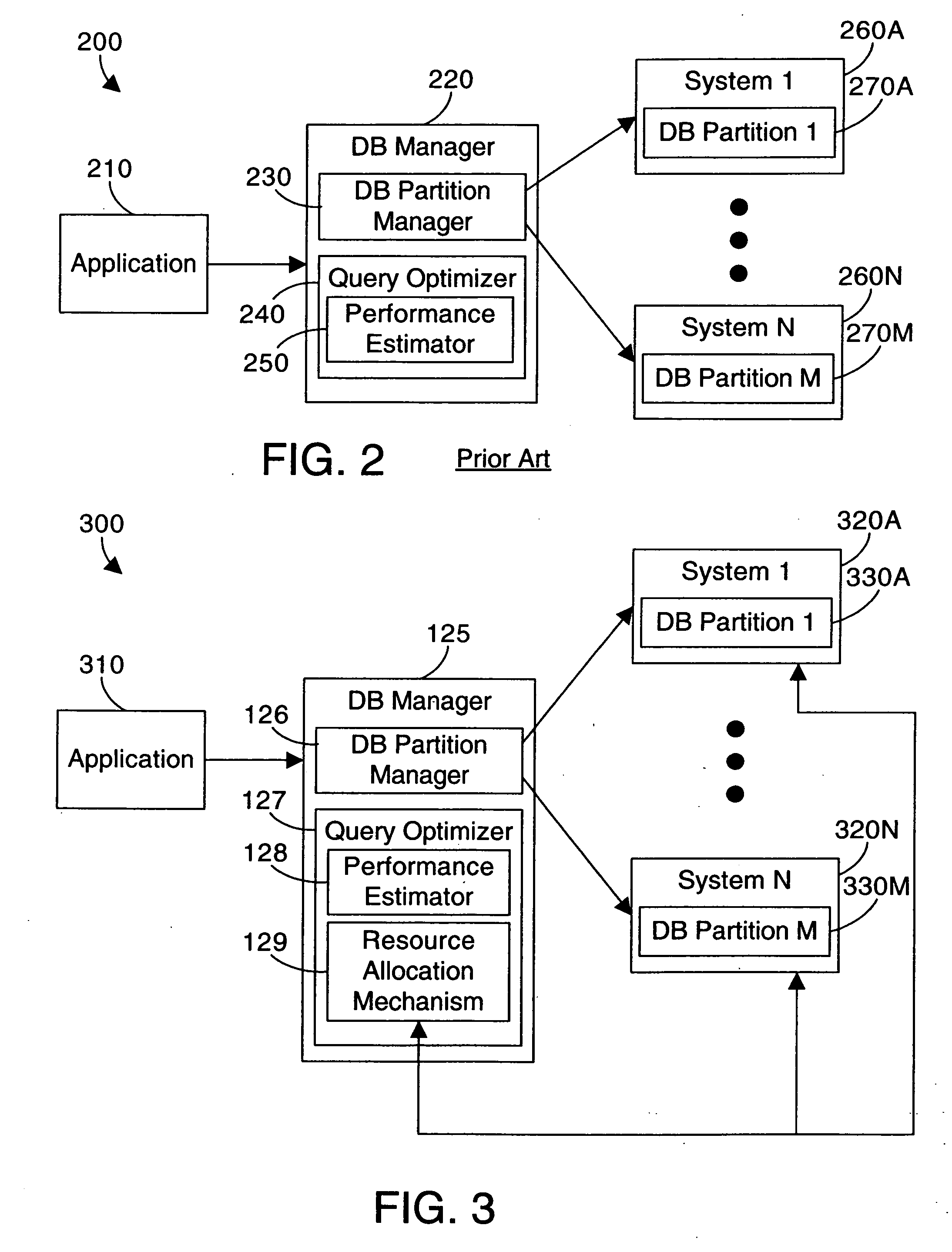Apparatus and method for autonomic adjustment of resources in a logical partition to improve partitioned query performance
a technology of logical partition and partitioning database, applied in the field of computer systems, can solve the problems of slowing down the performance of the computer industry, not operating as efficiently as it could, and many partitioned databases that cannot be partitioned, so as to improve the performance of the query and enhance the query performan
- Summary
- Abstract
- Description
- Claims
- Application Information
AI Technical Summary
Benefits of technology
Problems solved by technology
Method used
Image
Examples
Embodiment Construction
[0017] The preferred embodiments evaluate performance of a query to a partitioned database, determine what resources are available for potential reallocation, evaluate performance of the query based on a proposed reallocation, and iterate in an attempt to find the allocation of resources that provides the best performance for the query. Once found, the reallocation of resources is initiated, thereby causing an autonomic reallocation of resources among logical partitions to optimize the performance of a query to a partitioned database.
[0018] Two different types of partitions are discussed herein, and some explanation is required to clarify what the two terms mean. The first is a logical partition. Logical partitions are logical divisions on a computer system that allow each logical partition to appear and operate as a separate and distinct computer system. Thus, a single computer system could be partitioned into three logical partitions, making the single computer system logically a...
PUM
 Login to View More
Login to View More Abstract
Description
Claims
Application Information
 Login to View More
Login to View More - R&D
- Intellectual Property
- Life Sciences
- Materials
- Tech Scout
- Unparalleled Data Quality
- Higher Quality Content
- 60% Fewer Hallucinations
Browse by: Latest US Patents, China's latest patents, Technical Efficacy Thesaurus, Application Domain, Technology Topic, Popular Technical Reports.
© 2025 PatSnap. All rights reserved.Legal|Privacy policy|Modern Slavery Act Transparency Statement|Sitemap|About US| Contact US: help@patsnap.com



